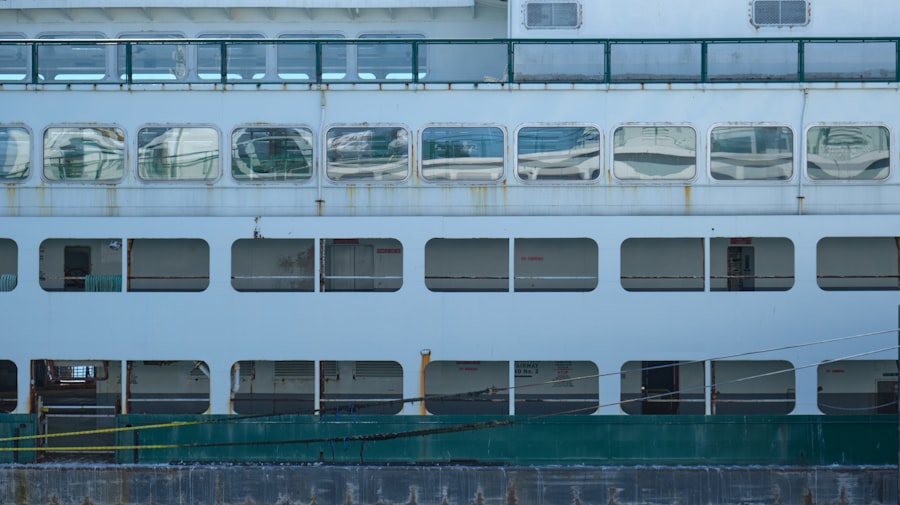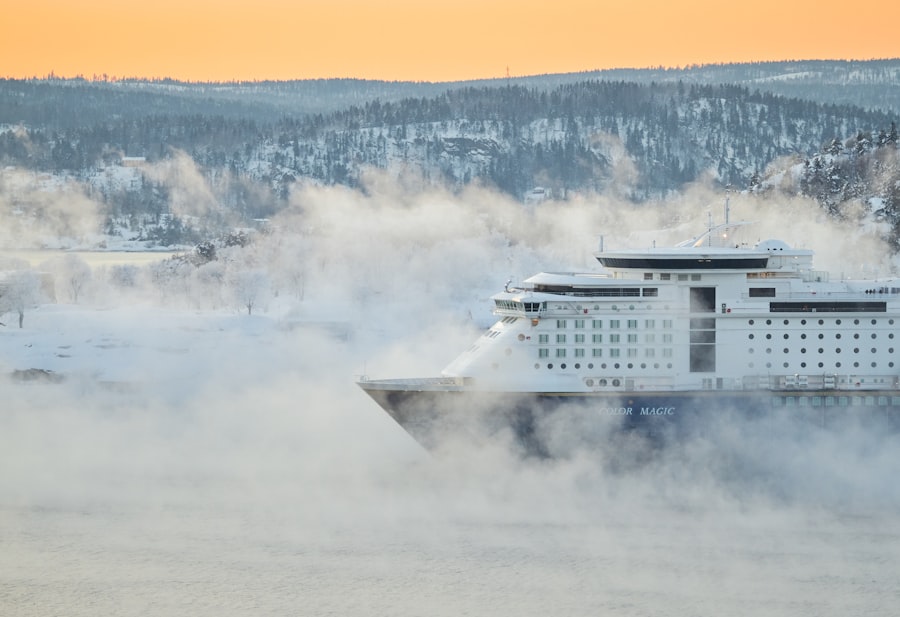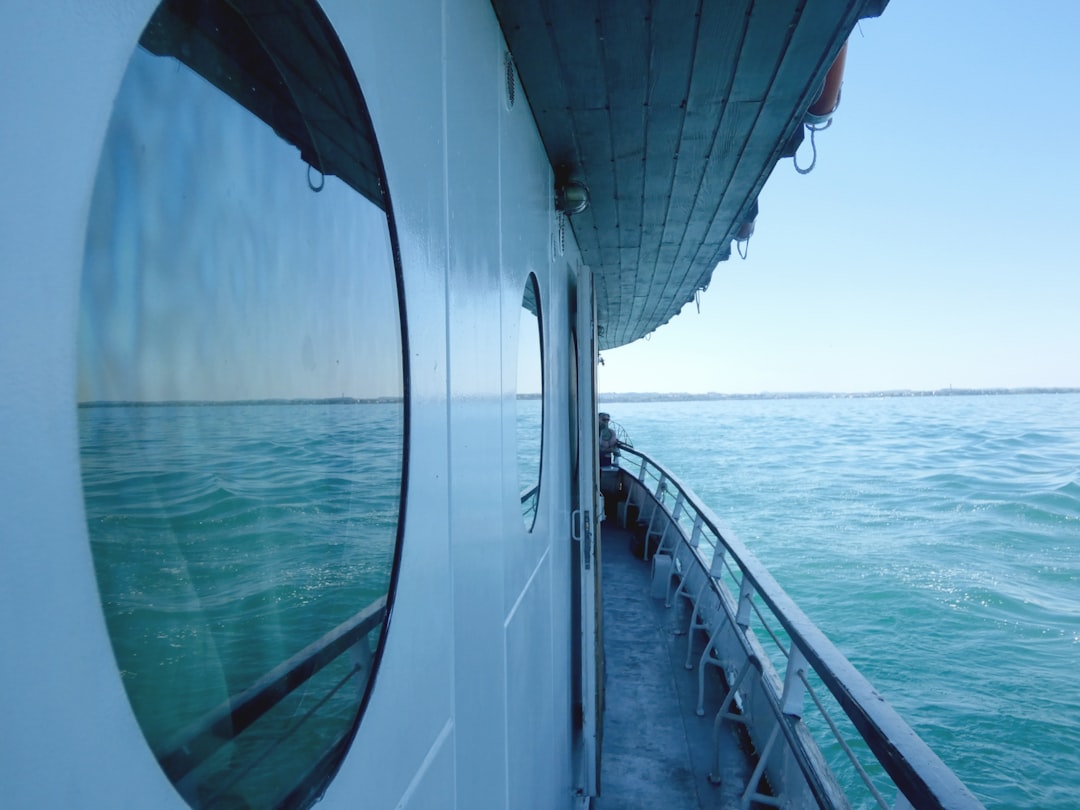The Drake Passage, a body of water that separates South America from Antarctica, is renowned for its tumultuous seas and breathtaking vistas. Stretching approximately 600 miles, this passage is often regarded as one of the most challenging maritime routes in the world. Named after the English explorer Sir Francis Drake, who navigated these waters in the late 16th century, the Drake Passage has become a focal point for adventurers and nature enthusiasts alike.
Its unpredictable weather patterns and strong currents have earned it a reputation that both intimidates and fascinates those who dare to traverse it. The significance of the Drake Passage extends beyond its geographical location; it serves as a vital conduit for marine life and plays a crucial role in global oceanic circulation. The confluence of the Atlantic and Pacific Oceans creates a unique ecosystem that supports a diverse array of wildlife.
For many travelers, crossing the Drake Passage is not merely a journey but an initiation into the wonders of the Southern Ocean. As they embark on this adventure, they are often filled with anticipation and excitement, eager to witness the natural beauty that lies ahead.
Key Takeaways
- The Drake Passage is a body of water between South America’s Cape Horn and the South Shetland Islands of Antarctica, known for its challenging sailing conditions.
- A fly-over cruise offers a unique and thrilling experience of crossing the Drake Passage by air, providing stunning aerial views of the Antarctic landscape.
- The Drake Passage is home to diverse wildlife such as penguins, seals, and whales, as well as unique flora and geological formations.
- The history of the Drake Passage is rich with exploration and scientific significance, serving as a crucial route for early navigators and modern research expeditions.
- The best time to visit the Drake Passage is during the Antarctic summer, from November to March, when wildlife is most active and the weather is relatively milder.
The Unique Experience of a Fly-Over Cruise
A fly-over cruise offers a distinctive way to experience the Drake Passage, combining the thrill of aerial views with the comfort of a cruise. Unlike traditional sea voyages that require days of navigating turbulent waters, a fly-over cruise allows passengers to soar above the waves, providing an unparalleled perspective of this majestic region. Travelers can marvel at the vast expanse of ocean and the rugged coastline of Antarctica without enduring the often-choppy conditions that characterize this passage.
The experience begins with a scenic flight that takes passengers over the stunning landscapes of the Southern Ocean. As they ascend into the sky, they are treated to panoramic views of icebergs, glacial formations, and the dramatic contours of the land below. This aerial perspective not only enhances their appreciation for the natural beauty of the region but also allows them to capture breathtaking photographs that will serve as lasting memories.
Upon landing, passengers can seamlessly transition into their cruise experience, exploring the wonders of Antarctica while enjoying the comforts and amenities offered on board.
Wildlife and Nature in the Drake Passage

The Drake Passage is teeming with wildlife, making it a paradise for nature lovers and wildlife enthusiasts. The nutrient-rich waters support an abundance of marine life, including various species of fish, seals, and whales. Among the most iconic inhabitants are the majestic humpback whales, which can often be seen breaching and feeding in these waters during certain times of the year.
Additionally, orcas and minke whales are frequent visitors, captivating onlookers with their grace and power. Birdwatchers will also find delight in the avian diversity that thrives in this region. The Drake Passage is home to numerous seabird species, including albatrosses, petrels, and skuas.
These birds are often seen gliding effortlessly above the waves or diving into the water in search of food. The sight of a wandering albatross soaring overhead is a highlight for many travelers, symbolizing the wild spirit of this remote area. The combination of marine mammals and seabirds creates a dynamic ecosystem that showcases nature’s resilience and beauty.
The History and Significance of the Drake Passage
| Aspect | Details |
|---|---|
| Location | Between the southern tip of South America and the northern tip of the Antarctic Peninsula |
| Width | Approximately 800 kilometers |
| Depth | Deepest point reaches over 8,000 meters |
| Significance | Important for the circulation of the world’s oceans and the global climate system |
| History | Named after Sir Francis Drake, the first Englishman to navigate the passage in 1578 |
The history of the Drake Passage is rich and complex, marked by exploration, discovery, and scientific inquiry. Sir Francis Drake’s voyage in 1578 was one of the first recorded crossings, paving the way for future explorers who sought to navigate these treacherous waters. Over the centuries, many adventurers have followed in his footsteps, drawn by the allure of uncharted territories and the promise of new discoveries.
The passage has served as a critical route for explorers, scientists, and researchers who have sought to understand the unique environment of Antarctica. In addition to its historical significance, the Drake Passage plays a vital role in global climate regulation. The mixing of ocean currents in this region influences weather patterns across the Southern Hemisphere.
Scientists continue to study its impact on marine ecosystems and climate change, recognizing that understanding this passage is essential for predicting future environmental shifts. As such, it stands not only as a geographical landmark but also as a focal point for ongoing research and conservation efforts.
The Best Time to Visit the Drake Passage
Timing is crucial when planning a visit to the Drake Passage, as weather conditions can vary significantly throughout the year. The peak season for travel typically falls between November and March when temperatures are milder and wildlife activity is at its highest. During these months, travelers can expect relatively calm seas and longer daylight hours, making it an ideal time for exploration and observation.
However, each season offers its own unique charm. Early summer brings vibrant landscapes adorned with blooming flora and active wildlife as animals prepare for breeding. In contrast, late summer offers opportunities to witness young penguin chicks taking their first steps on land.
Regardless of when one chooses to visit, careful planning ensures that travelers can make the most of their experience in this extraordinary region.
What to Pack for a Fly-Over Cruise

Packing for a fly-over cruise requires careful consideration to ensure comfort and preparedness for varying conditions. Essential items include layered clothing that can accommodate fluctuating temperatures, as well as waterproof outerwear to protect against potential rain or sea spray during excursions. Sturdy footwear is also crucial for exploring rocky shorelines or icy terrain while disembarking from the cruise vessel.
In addition to clothing, travelers should not forget to bring personal items such as sunscreen, sunglasses, and hats to shield against UV rays reflecting off snow and ice. Binoculars are highly recommended for wildlife viewing from both the air and on land. A good camera or smartphone with ample storage will help capture unforgettable moments throughout the journey.
By packing thoughtfully, travelers can ensure they are well-equipped to enjoy every aspect of their fly-over cruise experience.
The Itinerary of a Fly-Over Cruise
The itinerary for a fly-over cruise typically includes several key destinations that showcase the natural beauty and wildlife of Antarctica. After departing from a designated port city, passengers embark on an exhilarating flight over the Drake Passage before landing at various points along the Antarctic Peninsula. Each stop offers unique opportunities for exploration, whether it be visiting research stations or observing wildlife in their natural habitats.
Excursions may include guided hikes on glaciers, zodiac boat rides through icy waters, or visits to penguin colonies where travelers can observe these charming creatures up close. Educational programs led by onboard naturalists provide insights into the region’s ecology and history, enriching passengers’ understanding of their surroundings. This carefully curated itinerary ensures that travelers experience a diverse range of activities while immersing themselves in the wonders of Antarctica.
Accommodations and Amenities on a Fly-Over Cruise
Accommodations on a fly-over cruise are designed to provide comfort and relaxation after days filled with adventure. Passengers can expect well-appointed cabins equipped with modern amenities such as private bathrooms, climate control, and stunning views from large windows. Many cruises also offer communal spaces where guests can unwind, socialize, or enjoy educational presentations about their surroundings.
Dining options aboard these cruises often feature gourmet meals prepared with fresh ingredients sourced from local markets or sustainable fisheries. Passengers can indulge in culinary delights while enjoying panoramic views of the ever-changing landscape outside. Additionally, onboard amenities may include fitness centers, spas, and lounges where guests can relax after a day of exploration.
Safety and Precautions in the Drake Passage
Safety is paramount when navigating the unpredictable waters of the Drake Passage. Cruise operators prioritize passenger well-being by implementing rigorous safety protocols and providing comprehensive briefings before departure. Travelers are educated about potential hazards associated with sea travel in this region, including rough seas and sudden weather changes.
Onboard staff are trained in emergency procedures and first aid to ensure that passengers feel secure throughout their journey. Additionally, life jackets and safety equipment are readily available for use during excursions or in case of emergencies. By adhering to safety guidelines and remaining vigilant during their travels, passengers can enjoy their adventure with peace of mind.
The Future of Tourism in the Drake Passage
As interest in Antarctic tourism continues to grow, discussions surrounding sustainable practices have become increasingly important. The delicate ecosystems within the Drake Passage require careful management to minimize human impact while allowing travelers to experience its wonders. Cruise operators are increasingly adopting eco-friendly practices such as reducing waste, utilizing sustainable resources, and supporting local conservation efforts.
The future of tourism in this region hinges on balancing exploration with preservation. As more travelers seek out unique experiences in remote locations like the Drake Passage, it becomes essential to foster awareness about environmental stewardship among visitors. By promoting responsible tourism practices, stakeholders can ensure that future generations will have the opportunity to appreciate this extraordinary part of our planet.
The Unforgettable Memories of a Fly-Over Cruise
A fly-over cruise through the Drake Passage offers an unparalleled opportunity to witness one of nature’s most awe-inspiring regions while enjoying modern comforts aboard a luxurious vessel. From breathtaking aerial views to intimate encounters with wildlife, each moment spent in this remarkable area leaves an indelible mark on travelers’ hearts and minds. The combination of adventure, education, and relaxation creates lasting memories that will be cherished long after returning home.
As travelers reflect on their experiences in the Drake Passage—whether it be witnessing whales breach against a backdrop of icy cliffs or standing among colonies of playful penguins—they carry with them stories that inspire others to embark on their own journeys into this wild frontier. Ultimately, a fly-over cruise serves not only as an exploration of geography but also as an invitation to connect with nature in its purest form—a truly unforgettable adventure awaits those who dare to venture into these extraordinary waters.
This journey allows travelers to bypass the often turbulent waters of the Drake Passage, providing a more comfortable and time-efficient route to the icy landscapes of Antarctica. For those interested in learning more about the logistics and experiences of such a cruise, a related article on MyGeoQuest provides valuable insights and tips. You can read more about it by visiting this page.
WATCH HERE: Drake Passage: Earth’s Deadliest Waters Revealed
FAQs
What is a fly over Drake Passage cruise?
A fly over Drake Passage cruise is a unique travel experience that involves flying over the notoriously rough and unpredictable Drake Passage, rather than sailing through it. This allows travelers to reach Antarctica more quickly and with less discomfort.
How does a fly over Drake Passage cruise work?
Passengers board a flight from Punta Arenas, Chile, to King George Island in Antarctica. From there, they can join a traditional Antarctic cruise to explore the continent.
What are the benefits of a fly over Drake Passage cruise?
The main benefit is the time saved and the avoidance of potential seasickness and rough seas that are common in the Drake Passage. It also allows travelers to maximize their time in Antarctica.
What can travelers expect to see on a fly over Drake Passage cruise?
Travelers can expect to see stunning aerial views of the Antarctic landscape, including glaciers, icebergs, and wildlife such as penguins and seals. Once on the continent, they can participate in activities like hiking, kayaking, and wildlife spotting.
Are there any drawbacks to a fly over Drake Passage cruise?
One potential drawback is the higher cost compared to traditional Antarctic cruises. Additionally, travelers miss out on the experience of sailing through the Drake Passage, which is a significant part of the adventure for some people.
